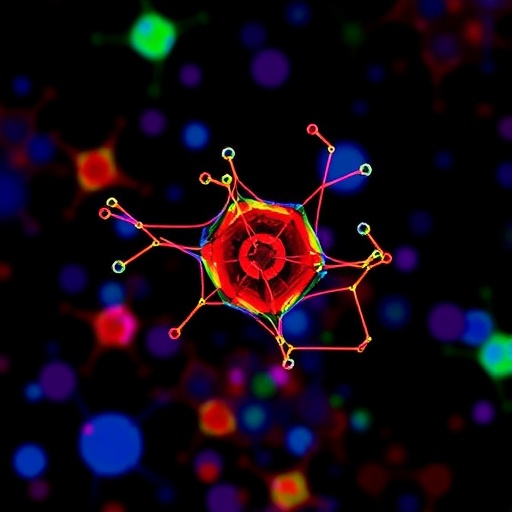In a groundbreaking study poised to reshape the early diagnosis and treatment of schizophrenia, researchers have unveiled an intricate multiomics portrait of plasma exosomes from first-episode, drug-naïve patients. This pioneering work, leveraging cutting-edge small RNA sequencing and proteomic technologies, offers unprecedented insight into the molecular underpinnings of this complex psychiatric disorder, breaking new ground in a field often hindered by its elusive etiology.
Schizophrenia, a chronic and severely debilitating mental illness, presents formidable challenges to clinicians, especially in its early stages where diagnostic markers are scarce and therapeutic interventions often have limited efficacy. The study’s novel approach zeroes in on plasma exosomes—nano-sized vesicles circulating in the blood, known to ferry molecular signals including microRNAs and proteins—providing a minimally invasive window into the brain’s biochemical landscape.
The research team gathered plasma samples from a carefully selected cohort comprising ten patients experiencing their first episode of schizophrenia who had not yet begun any pharmacological treatment, alongside ten healthy control subjects. By isolating exosomes and profiling their microRNA and protein content through small RNA sequencing and high-performance liquid chromatography tandem mass spectrometry respectively, the scientists crafted a comprehensive multiomics data set, which they then integrated using advanced bioinformatic tools to discern disease-specific molecular signatures.
A striking discovery emerged: 167 microRNAs exhibited differential expression in the patient exosomes compared to controls. These microRNAs, small but potent regulators of gene expression, were predicted to target genes deeply involved in cellular processes such as RNA catabolism and the ubiquitin-proteasome system, pathways critical for protein turnover and cellular homeostasis. Functional enrichment analyses underscored this connection, revealing aberrations in RNA degradation and protein catabolic mechanisms as potentially key contributors to schizophrenia pathology.
Parallel proteomic profiling complemented these findings by identifying 274 proteins with altered abundance in patient-derived exosomes. Notably, many of these proteins are implicated in immune responses and key signaling pathways, suggesting that dysregulated immunity and signal transduction could interplay with gene regulatory disruptions to drive disease onset. This dual layer of molecular disturbance underscores schizophrenia’s multifaceted nature beyond purely neurochemical theories.
Beyond cataloging individual molecular perturbations, the study innovatively constructed competing endogenous RNA (ceRNA) networks that integrate microRNAs and proteins, offering a holistic view of regulatory interplay. Two distinct ceRNA networks emerged: one composed of 21 downregulated microRNAs paired with 21 upregulated proteins, and another of 64 upregulated microRNAs coupled with 86 downregulated proteins. These interconnected networks propose a complex balance of gene expression modulation in schizophrenia, potentially reflecting compensatory or pathological feedback loops.
Crucially, the top ten microRNAs and proteins identified exhibited promising diagnostic potential when assessed collectively, highlighting their prospective utility as biomarkers. This paves the way for developing blood-based assays that could revolutionize early-stage schizophrenia diagnosis, reducing reliance on subjective psychiatric evaluations and enabling timely therapeutic interventions.
The implications of this research extend into therapeutic realms as well. By illuminating specific molecular pathways and regulatory networks disrupted in drug-naïve patients, novel targets emerge for drug development and precision medicine approaches. Interventions aimed at restoring normal miRNA-protein interplay or correcting immune and protein catabolism abnormalities could hold transformative potential for patient outcomes.
Importantly, this study exemplifies the power of multiomics methodologies to decode complex biological landscapes in neuropsychiatric disorders. Integrating transcriptomic and proteomic data within circulating exosomes charts a novel course for biomarker discovery, circumventing the challenges of direct brain tissue analysis and capturing systemic manifestations of central nervous system pathology.
While the sample size remains modest, the rigor of patient selection and the application of sophisticated analytical techniques lend robustness to the findings. Future research with larger cohorts and longitudinal designs will be essential to validate these biomarkers and explore their evolution throughout disease progression and treatment response.
Moreover, understanding the functional consequences of these microRNA and protein alterations at the cellular and molecular levels could spur the discovery of mechanistic pathways driving schizophrenia. Experimental validation in cellular models and animal studies will be pivotal to translate these associative networks into actionable therapeutic strategies.
In sum, this landmark investigation delineates a detailed multiomics landscape of plasma exosomes in early-stage, untreated schizophrenia, illuminating novel molecular dialogues that underpin the disorder. By bridging molecular biology, bioinformatics, and clinical psychiatry, the study opens an exciting frontier for transforming schizophrenia management through precision diagnostics and tailored therapies.
As the field advances, harnessing the communicative power of exosomes paired with multi-layered molecular profiling may become a cornerstone in unraveling complex brain disorders beyond schizophrenia, fostering a new era of neuropsychiatric medicine grounded in molecular specificity and early intervention.
Subject of Research: Multiomics analysis of plasma exosomes to identify molecular signatures and regulatory networks in first-episode, drug-naïve schizophrenia patients.
Article Title: The multiomics landscape of plasma exosomes in first-episode drug-naïve of schizophrenia
Article References:
Dong, Y., Wang, S., Li, M. et al. The multiomics landscape of plasma exosomes in first-episode drug-naïve of schizophrenia. BMC Psychiatry 25, 764 (2025). https://doi.org/10.1186/s12888-025-07205-4
Image Credits: AI Generated




